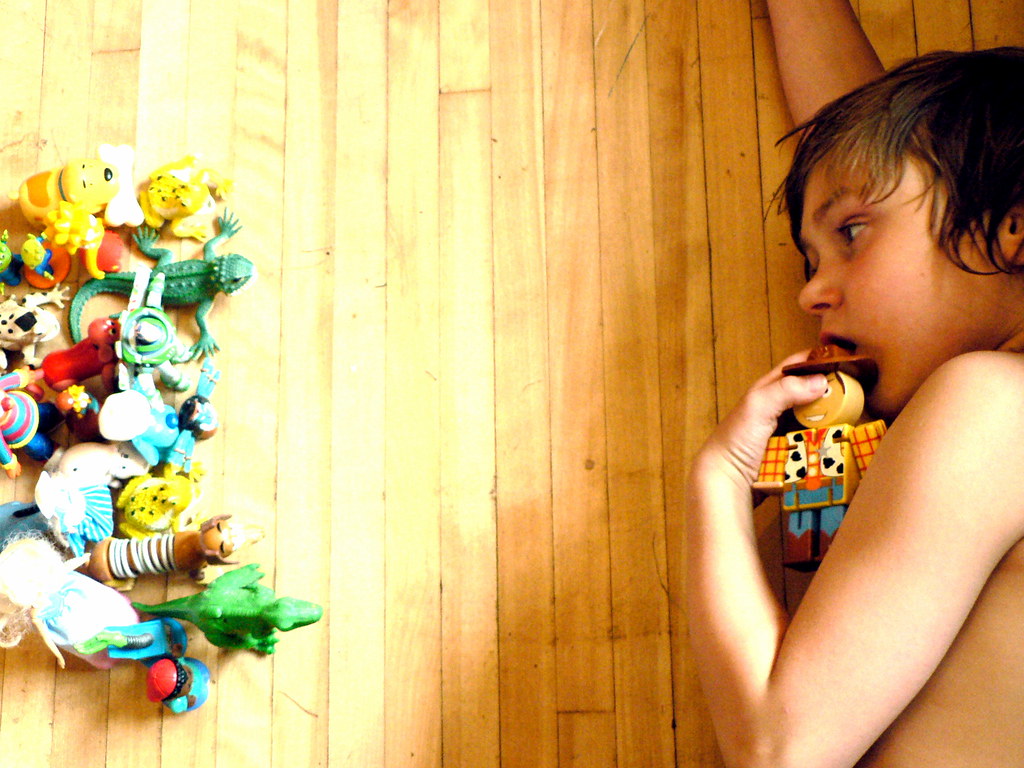美國國家環境健康科學研究所(National Institute of Environmental Health Sciences,NIEHS)資助的研究發現,自閉症兒童乳牙的鉛含量比無自閉症兒童高,鋅和錳等重要養分的含量則較低。
研究人員以雙胞胎進行研究,以排除基因和環境的影響。
這份發表於《自然通訊》(Nature Communications)期刊的研究顯示,年幼時的重金屬接觸量以及兒童的身體如何處理這些重金屬,和罹患自閉症的風險有關。
自閉症佔全球人口1% 尚無單一成因
自閉症譜系疾患(Autism spectrum disorder,ASD)是複雜的發展障礙,通常幼年期開始出現症狀,影響溝通與社交能力。ASD包含一系列特定行為表現,是一種「譜系疾患」,每個病患的症狀和影響程度有所不同,且沒有任何已知的單一成因。
ASD症狀包括口語發展遲緩、重複使用特定詞彙或機械性的動作,如拍手、旋轉物品,缺乏眼神交集,對同儕關係沒有興趣。
根據亞特蘭大疾病管制預防中心的資料,全世界有1%人口患有ASD。
雷射定位病童乳牙 發現重金屬含量差異
在NIEHS的研究中,科學家以雷射定位出乳牙不同時期長出的年輪,進而發現ASD病童和非病童的重金屬攝入量差異在出生前幾個月和後幾個月最明顯。
ASD病童乳齒的鉛含量在整個發展期都較高,其中又以剛出生時的差異最大。
科學家也發現ASD病童乳齒的錳含量較低,也是出生前後差異最明顯。鋅含量的變化比較複雜,ASD病童尚未出生前體內鋅含量較低,但是出生後漸增。
自閉症環境因子 學者:可能子宮內就開始發展
「我們認為ASD可能早在子宮就開始發展,研究也顯示環境會增加罹患ASD的風險。但是當兒童3~4歲出現症狀時,已經難以回溯懷孕時母親的環境。用乳牙來做研究剛好可以克服這個困難。」NIEHS基因環境和健康部主任勞勒(Cindy Lawler)博士說。
科學家找來32對雙胞胎和12位雙胞胎的其中一位,有些雙胞胎中只有一位ASD,有些則是兩位都是ASD和兩位都不是,比較他們的乳牙狀況。
雙胞胎兩人都有ASD者,乳牙中的重金屬含量差異不大,雙胞胎只有一位有ASD者,含量差異較大。
過去研究就曾發現,暴露於鉛等重金屬以及缺乏錳等重要元素,可能傷害胎兒和嬰幼兒腦部。雖然錳是必須的養分,劑量過高也會造成傷害。暴露於大量的鉛和錳都曾被證實和自閉症特徵與嚴重性有關。
研究主要作者、紐約西奈山伊坎醫學院環境科學家及牙醫阿若拉(Manish Arora)博士和研究團隊,在NIEHS的支持下,發展出用雷射擷取自然掉落的乳齒牙本質進行金屬分析的研究技術,可推算胎兒和嬰幼兒時期的金屬曝露量。過去同一研究團隊曾證實,不同牙本質層的鉛含量和不同發展時期的鉛曝露量是相對應的。
這個技術也有機會運用於其他疾病的研究,像是注意力不足過動症。
Baby teeth from children with autism contain more toxic lead and less of the essential nutrients zinc and manganese, compared to teeth from children without autism, according to an innovative study funded by the National Institute of Environmental Health Sciences, NIEHS, part of the National Institutes of Health.
The researchers studied twins to control genetic influences and focus on possible environmental contributors to the disease.
The findings, published today in the journal “Nature Communications,” suggest that differences in early-life exposure to metals, or more importantly how a child’s body processes them, may affect the risk of autism.
Autism spectrum disorder, or ASD, is a complex developmental disability; signs typically appear during early childhood and affect a person’s ability to communicate, and interact with others. ASD is defined by a certain set of behaviors and is a “spectrum condition” that affects individuals differently and to varying degrees. There is no known single cause of autism.
Symptoms include: lack of or delay in spoken language, repetitive use of language or motor mannerisms such as hand-flapping, twirling objects, little or no eye contact and lack of interest in peer relationships.
About one percent of the world population has autism spectrum disorder, according to 2014 figures from the Centers for Disease Control and Prevention in Atlanta.
The NIEHS study shows that the differences in metal uptake between children with and without autism were especially notable during the months just before and after the children were born. The scientists determined this by using lasers to map the growth rings in baby teeth generated during different developmental periods.
The researchers observed higher levels of lead in children with autism throughout development, with the greatest disparity observed during the period following birth.
They also observed lower uptake of manganese in children with autism, both before and after birth. The pattern was more complex for zinc. Children with autism had lower zinc levels earlier in the womb, but these levels then increased after birth, compared to children without autism.
“We think autism begins very early, most likely in the womb, and research suggests that our environment can increase a child’s risk. But by the time children are diagnosed at age 3 or 4, it’s hard to go back and know what the moms were exposed to,” said Cindy Lawler, Ph.D., head of the NIEHS Genes, Environment, and Health Branch. “With baby teeth, we can actually do that.”
Patterns of metal uptake were compared using teeth from 32 pairs of twins and 12 individual twins. The researchers compared patterns in twins where only one had autism, as well as in twins where both or neither had autism.
Smaller differences in the patterns of metal uptake occurred when both twins had autism. Larger differences occurred in twins where only one sibling had autism.
The findings build on prior research showing that exposure to toxic metals, such as lead, and deficiencies of essential nutrients, like manganese, may harm brain development while in the womb or during early childhood. Although manganese is an essential nutrient, it can also be toxic at high doses. Exposure to both lead and high levels of manganese has been associated with autism traits and severity.
The study was led by Manish Arora, Ph.D., an environmental scientist and dentist at the Icahn School of Medicine at Mount Sinai in New York.
With support from NIEHS, Arora and colleagues had previously developed a method that used naturally shed baby teeth to measure children’s exposure to lead and other metals while in the womb and during early childhood.
The researchers use lasers to extract precise layers of dentine, the hard substance beneath tooth enamel, for metal analysis. The team previously showed that the amount of lead in different layers of dentine corresponds to lead exposure during different developmental periods.
The method of using baby teeth to measure past exposure to metals also holds promise for other disorders, such as attention deficit hyperactivity disorder.
※ 全文及圖片詳見:ENS






